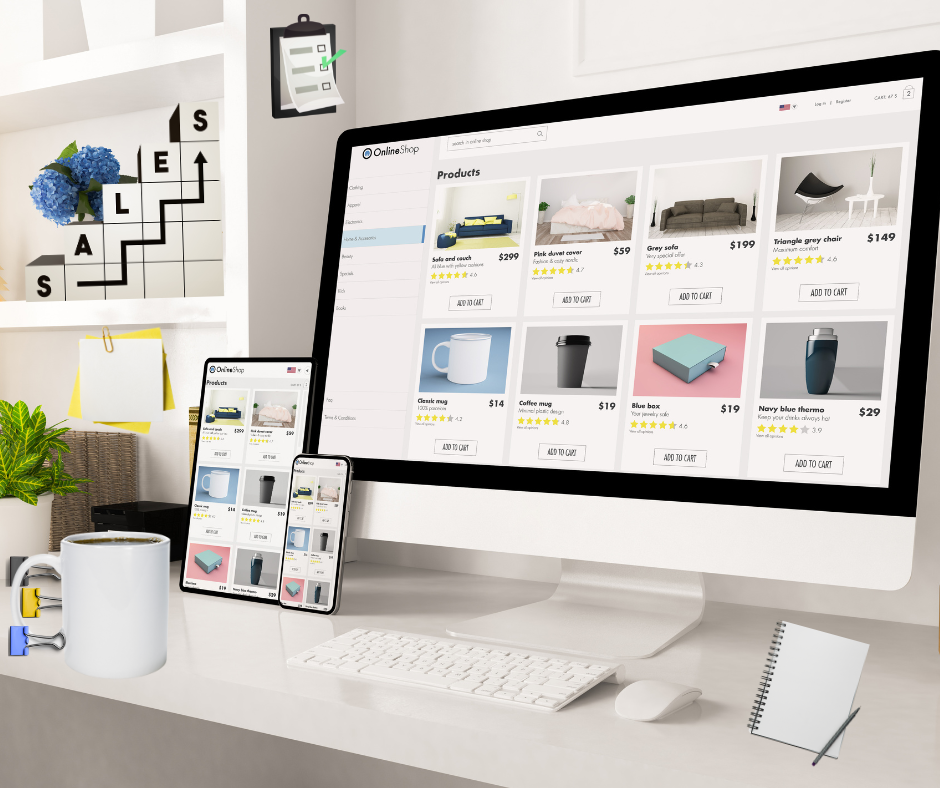What is Dropshipping?
Dropshipping is a business model that allows entrepreneurs to sell products online without having to stock inventory or handle shipping logistics. Instead, when a customer places an order through your online store, you forward the order to a third-party supplier—usually a wholesaler or manufacturer—who then ships the product directly to the customer. This method eliminates the need for upfront inventory investment, warehousing costs, and order fulfillment responsibilities. It’s a low-risk way to start an e-commerce business, making it ideal for beginners or those with limited capital.
Step-by-Step:
- Choose a niche – Focus on a specific category (like pet accessories or fitness gear) that has demand, low competition, and good profit margins.
- Conduct market research – Use tools like Google Trends, AliExpress, or product research platforms to validate demand and competition.
- Find a reliable supplier – Partner with trusted dropshipping suppliers through platforms like AliExpress, Spocket, or Oberlo.
- Build your online store – Use platforms like Shopify, WooCommerce, or BigCommerce to create a professional-looking website.
- Import products – Use apps like DSers or Zendrop to import your chosen products to your store with proper descriptions and pricing.
- Set pricing strategy – Ensure you add enough markup to cover your costs, including transaction fees and advertising.
- Promote your store – Use social media marketing, influencer partnerships, email campaigns, and paid ads to drive traffic.
- Manage orders and customer service – Forward orders to suppliers and communicate promptly with customers to maintain trust and satisfaction.
- Analyze and optimize – Monitor analytics to track sales, website behavior, and ad performance to adjust your strategy for better results.
The fact that the orders are fulfilled directly by suppliers, making it a low-risk entry into e-commerce.

The easiest way to determine your target audience in dropshipping is to first choose a specific niche—this is the category of products you want to sell. Each niche naturally attracts a different kind of customer. For example, if you’re selling pet accessories, your target audience is likely pet owners who love to spoil their pets with toys, grooming products, and stylish gear. These buyers tend to be emotionally invested in their purchases and are often looking for both practical and fun products. On the other hand, if your niche is tech gadgets, your ideal customers are tech-savvy individuals who value innovation, efficiency, and cutting-edge design—often younger adults, professionals, or hobbyists.
Your audience is essentially shaped by what problem your product solves or what desire it fulfills. The beauty of dropshipping is that it allows you to cater to very specific and passionate subgroups of online shoppers. These are people who prefer shopping online due to its convenience, variety, and ability to access niche products they might not find in local stores. For example, a customer looking for a rare skincare tool or a custom phone holder isn’t likely to find it easily at a retail chain, but they’ll search online—making them a perfect dropshipping prospect.
The easiest way to align your store with the right audience is to create detailed customer personas based on your chosen niche. Think about their age, income, shopping habits, values, and lifestyle. Use this information to shape your marketing, product descriptions, and store branding. For instance, if your store sells eco-friendly kitchen gadgets, your target audience might be health-conscious millennials or young families who care about sustainability. By clearly understanding who your customers are, you can communicate more effectively and convert more visitors into buyers.

Startup essentials include an e-commerce platform such as; Shopify to self-design your online store today or Get a partner to build and design it for you also, you can use WooCommerce), a reliable supplier (e.g., via AliExpress, Spocket or DHgate), product research tools, and a marketing budget.
Starting a successful dropshipping business begins with assembling the right startup essentials—tools and platforms that provide the foundation for launching, operating, and scaling your online store. The first key component is choosing a reliable e-commerce platform. Two of the most beginner-friendly and popular options are Shopify self-design or get a partner to build then transfer ownership to you as well as WooCommerce. Shopify is an all-in-one hosted solution known for its ease of use, built-in features, and seamless integrations with dropshipping apps like DSers and Oberlo which offer a 3 days FREE and 3 months for $1 each. WooCommerce, on the other hand, is a plugin for WordPress that gives you more customization flexibility and control, making it ideal if you’re tech-savvy or want to build a more unique site.
Once your store is set up, the next essential is securing a reliable supplier. This is crucial because your supplier will be responsible for product quality, shipping speed, and overall customer satisfaction. Platforms like AliExpress, DHgate, or Spocket allow you to connect with global suppliers offering a wide range of products at wholesale prices. It’s important to vet these suppliers carefully by checking their reviews, shipping times, and ratings to ensure they can deliver consistently and on time.
In addition to a storefront and supplier, you’ll need product research tools to help identify which items have the highest potential to sell. Tools like Sell The Trend, Ecomhunt, and Niche Scraper allow you to track trending products, competitor activity, and profit margins. These insights help you make informed decisions, avoid dead-stock listings, and focus your energy on promoting items that already have proven demand. Strong product research is what separates successful dropshippers from those who waste time and money on guesswork.
Lastly, a marketing budget is essential for getting your business in front of potential buyers. Dropshipping relies heavily on digital advertising, especially on platforms like Facebook, Instagram, TikTok, and Google Ads. A modest budget of even $100–$500 can be enough to start testing ad creatives and targeting strategies. As you begin to generate data, you can scale your budget to focus on the most profitable campaigns. Without marketing, your store won’t get the traffic needed to convert views into sales—so allocating funds for advertising is not optional; it’s vital.


Profits come from marking up wholesale prices. High-margin niches, subscription offers, and bundle deals can enhance revenue. Upselling and cross-selling are critical for boosting average order value.

Day-to-day tasks involve managing ads, handling customer service, tracking orders, optimizing listings, and adjusting the store based on analytics.

Scalability is one of its main advantages—successful stores can add products, launch multiple stores, or transition into private-label branding.

In conclusion, while dropshipping presents an accessible path to online entrepreneurship, it’s not without its challenges. Long shipping times, inconsistent product quality, and intense competition are real hurdles that can impact your reputation and customer satisfaction. However, these obstacles are far from insurmountable. By taking the time to vet your suppliers thoroughly, you can ensure more reliable shipping and better product standards. Setting clear and honest expectations on your product pages and throughout the checkout process helps build trust with customers—even if delivery takes a bit longer.
Moreover, success in dropshipping doesn’t come from trying to sell everything to everyone. It comes from laser-focusing on a niche audience and understanding their specific needs. When you carve out a well-defined market and offer real solutions, you significantly reduce competition and increase your chances of building a loyal customer base. With the right preparation, smart strategies, and a dedication to customer satisfaction, you can navigate these challenges and turn your dropshipping venture into a sustainable and profitable business.


